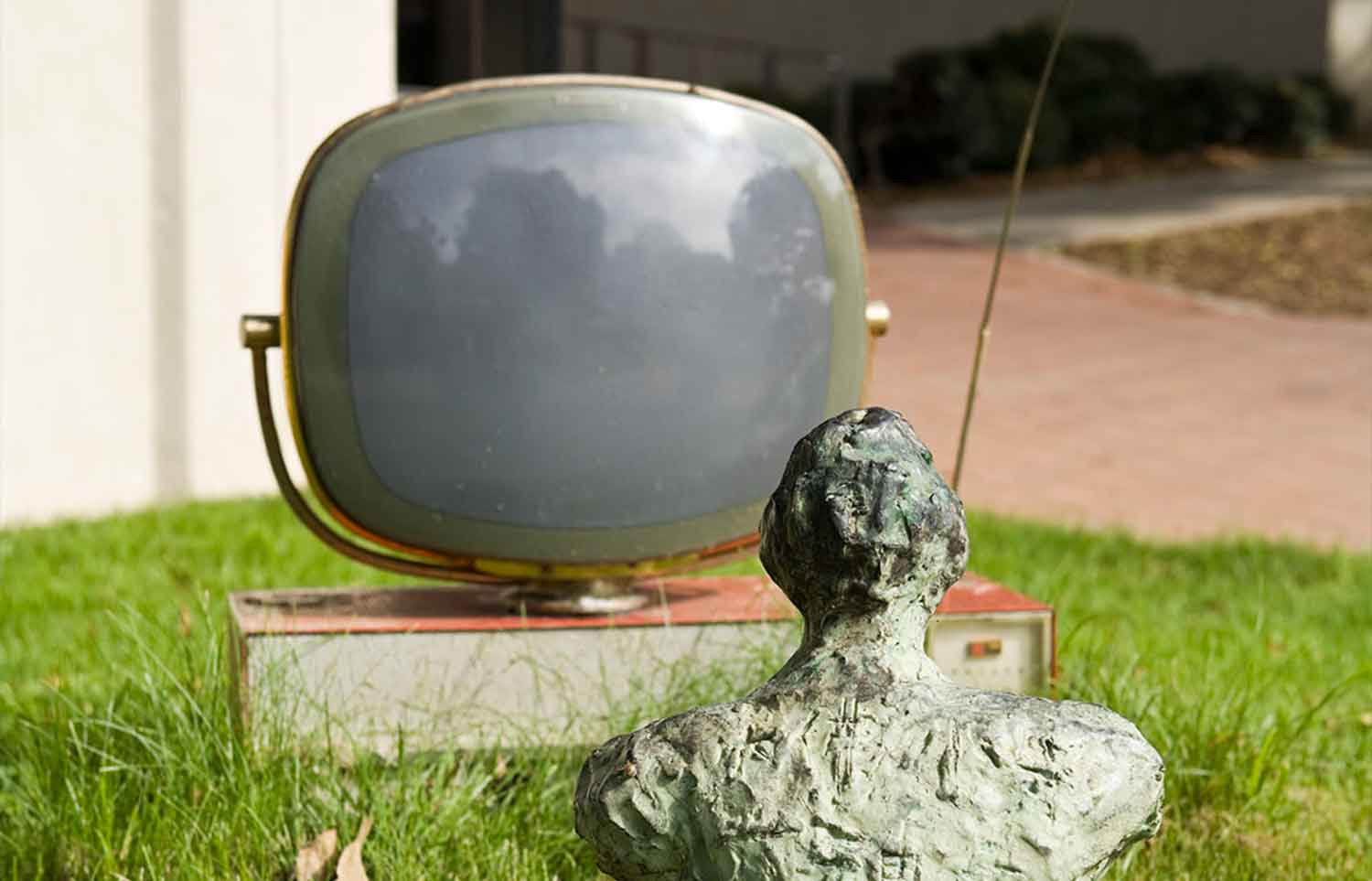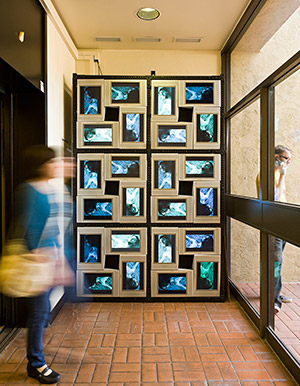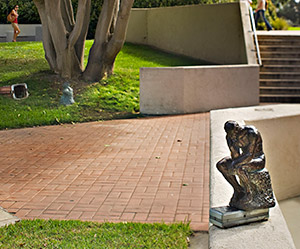
By:
- Inga Kiderra
Published Date
By:
- Inga Kiderra
Share This:
Grant to Fund Restoration of Stuart Collection Artwork by ‘Grandfather of Video Art’

Photos by Philipp Scholz Rittermann for the Stuart Collection/UC San Diego.
If you’ve ever wondered about the old television sets scattered around the lawn in front of the Media Center/Communication Building, wonder no more. The TV graveyard – along with a reproduction of Rodin’s famous “Thinker” and several small statues of Buddha gazing into the empty monitors – is the exterior portion of “Something Pacific” by Nam June Paik (1932-2006). Commissioned as part of the university’s renowned Stuart Collection of public art, “Something Pacific” was in 1986 Paik’s first permanent outdoor installation. The indoor portion is in the building lobby: a bank of 24 cutting edge and interactive TVs – except that they are no longer interactive or cutting-edge. A recent grant from the National Endowment of the Arts will change that.

The $30,000 award will be primarily used to work on the interior component of Paik’s work, said Stuart Collection Director Mary Beebe. Together with faculty and students from the UC San Diego Jacobs School of Engineering, the collection will both conserve and reinvent the video wall.
“We’re thrilled the NEA has chosen to support this important project,” Beebe said. “And we’re very proud to have won the NEA’s support a number of other times over the years.”
Paik, who is often referred to as “the grandfather of video art,” intended “Something Pacific” to evolve over time, Beebe said. The exterior was meant to deteriorate and slowly return to nature, while the interior was meant to reflect the latest in available technology, she said, contrasting with and commenting on the skeletal remains of the electronics outside. Unfortunately, the interior has become almost as obsolete as the exterior.
When built, “Something Pacific” relied on a Fairlight Computer Video Instrument to live-stream MTV and to provide for interactivity. But Fairlight, first released in 1984, has reached the end of its working life, and the interior portion of the artwork has been dark for about a year now.

The conservation project will restore a viewer’s ability to actively manipulate half of the video wall’s screens.
In the Stuart Collection’s proposal to the NEA, the engineers explain that they, students and faculty from the department of electrical and computer engineering, will be “developing new software code so that the program reproduces some of the video effects of the original and includes new ones. The software framework is called PureData, an open source data flow program. Once new effects have been developed, we will connect components such as a tablet and various motion and sound sensors, so that the public can interact by pressing virtual buttons and sliders, by drawing on the tablet, clapping their hands and waving. A webcam will allow viewers to integrate their own image to the synthesized video stream.”
Paik anticipated the need for re-invention. Asked in an interview about the Stuart Collection for the “Landmarks” book whether, in the event of obsolescence, an attempt should be made to replace the Fairlight synthesizer by a similar model maintaining the 1985-86 state of technology, he said: “No, I think it should be made better. Every young kid expects more now from media. So they should go with the progress of industry. … It’s like a symphony. When you write a symphony each new generation comes along and changes it and that way it becomes better and better.”
The Stuart Collection expects the project to be completed by the end of the academic year, or sooner. Stay tuned. Meanwhile, you can learn more about the artist and his significance on the collection’s website. And be sure to check out video about the artwork, too.
Share This:
You May Also Like
Stay in the Know
Keep up with all the latest from UC San Diego. Subscribe to the newsletter today.


